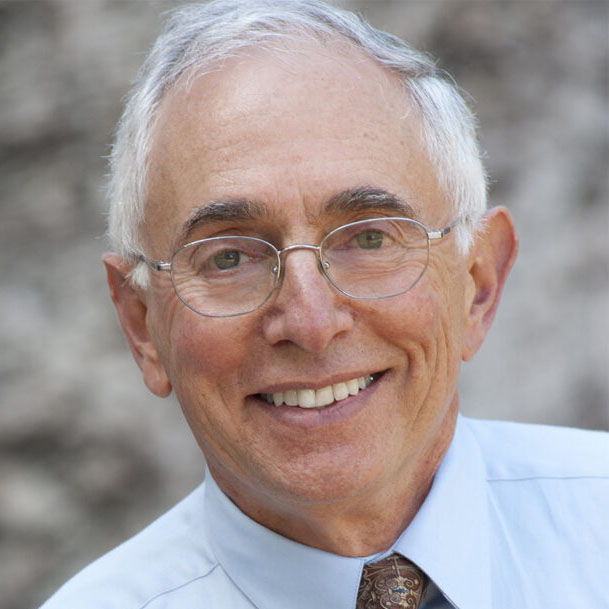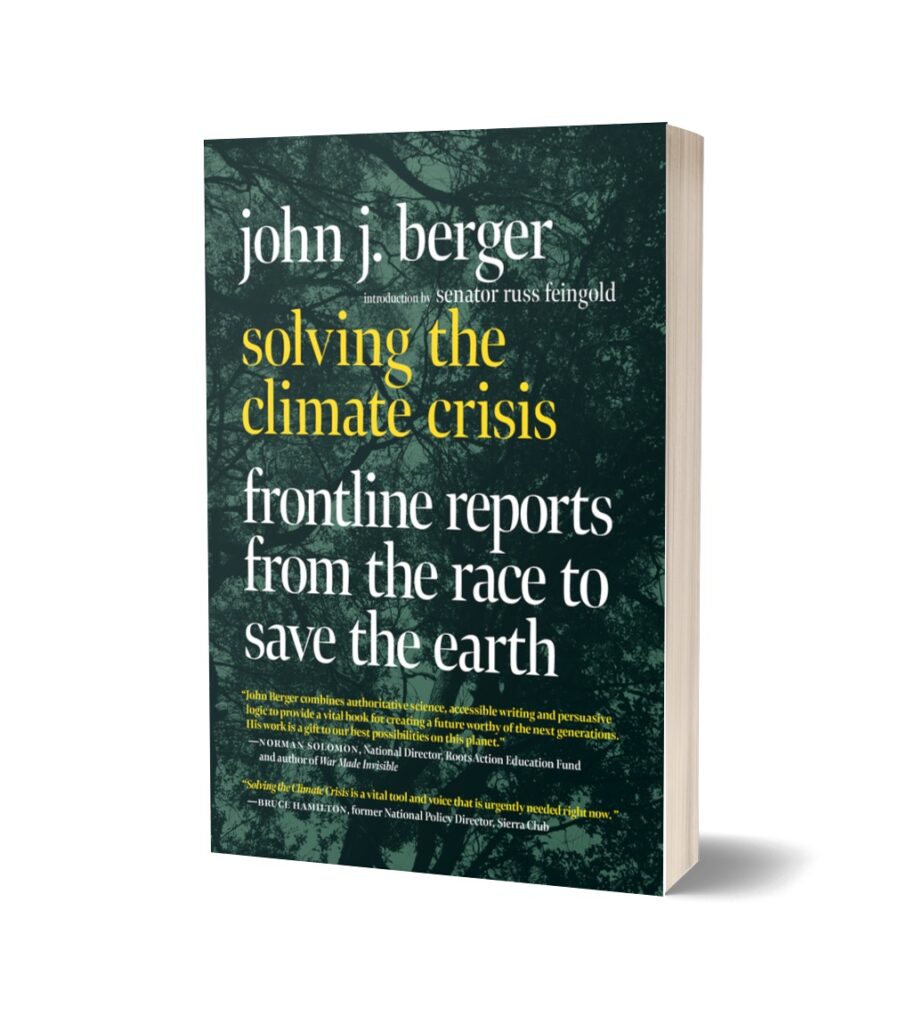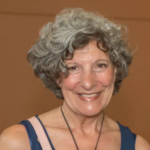Pick a word to describe John Berger, and “tenacious” comes to mind.
Time and again over a long career as an environmental and energy writer, policy specialist, researcher, consultant, and editor, Berger didn’t let rejection stop him.

Seventeen publishers passed on his first book, a caution against the dangers of nuclear power that came out in 1976. Berger’s latest book, Solving the Climate Crisis: Frontline Reports from the Race to Save the Earth, is his 11th and took eight years to get from inception to publication. One reason was the extensive research he conducted to make a “convincing and detailed case that there is a path forward to save our environment.” The other: 100 agents and publishers turned him down before Berger assumed pitching the book idea himself – and landed four offers. Seven Stories Press published it in October 2023.
The long-time ASJA member will share his experience and expertise on both climate change and what it takes in the #BookTok era to publish and promote a book at ASJA’s March 6 webinar, So You’re Thinking About Writing A Climate Book? He’ll be joined by Danielle Arigoni, an urban planner, community resilience expert, and first-time author, whose book Climate Resilience in an Aging Nation debuted on the same day as Berger’s.
In an email Q&A, Berger shared the note from Jack Kerouac that inspired his writing career, how a chance mass mailing from Ralph Nader led to his first book, his connection with ASJA, how his process for writing books has changed over time, and more. The interview has been edited for length and clarity.
How did you become a science writer?
It wasn’t a conscious decision. I wanted to be a novelist, inspired by Jack London and Jack Kerouac. In college, my roommate and I collaborated on a short story. Each of us wrote a page or two and then the other one picked it up. When we were done, I sent it to Jack Kerouac, who sent back a short, penciled note that read, “Berger, you write with a swing of your own, Jack Kerouac.”
After graduation, I got a scholarship to study at the University of Tunis in Tunisia for a year. I wandered around taking a lot of notes. When I returned, I pounded out a draft of a novel. I rewrote it ten times, and it got rejected by every publisher that ever laid eyes on it. I wrote a second novel, and rewrote that one endlessly, too. When the second novel failed to take the publishing world by storm, I needed to do something to actually make money.
By then I had worked as a daily news reporter, so I had professional writing experience. Quite serendipitously, I received a fundraising solicitation from Ralph Nader’s Critical Mass Energy Project sounding the alarm about the dangers of nuclear power. I was blown away and decided to write a book about nuclear power. It was a steep learning curve. My book proposal was rejected by 17 publishers. One day when I was driving through Palo Alto on the way home to Berkeley, it occurred to me that Ramparts Press was based there, so I impulsively pulled off the freeway and cold called. The publisher answered, I pitched him the book, he asked for the proposal, and eventually bought the book for a munificent $500 advance. It changed my life and career.
When Nuclear Power: The Unviable Option, A Critical Look at Our Energy Alternatives came out, David Brower, probably the nation’s leading environmentalist, asked me to work for him as Friends of the Earth’s energy projects director. That launched my career as an environmentalist. I went back to school for a master’s in energy and natural resources and later got a doctorate in ecology. All of that led to a lifelong interest in energy technology and the environmental impacts of energy technology, which led me to write about climate issues.
What led you to report on climate change?
I became deeply interested in the need to restore natural resource systems that were being damaged by human activity and in the nascent renewable energy industries. I reported on both in my 1997 book, Charging Ahead: The Business of Renewable Energy and What It Means for America. That book helped me recognize renewables as a safe and viable alternative to fossil fuels and to explicitly connect clean energy and climate change protection. I elaborated on that in my 2000 book, Beating the Heat: How and Why We Must Combat Climate Change.
By the early 2000s, the rapid advances in clean energy technology and energy efficiency made me think I should update Beating the Heat. At an ASJA meeting in the Bay Area, I mentioned my idea for a book on the dangers of climate change. Members told me it wouldn’t sell because people already knew about the dangers—what they didn’t know was what to do about it. After spending a few years on a book about forest restoration, I came back to the climate solutions book. When I started to describe the problem in an initial chapter it kept getting longer and longer and more and more detailed. Eventually, that became its own book: Climate Peril: The Intelligent Reader’s Guide to Understanding the Climate Crisis. That book led to the spinoff, Climate Myths: The Campaign Against Climate Science.
Your latest book is Solving the Climate Crisis – what’s it about?

The thesis is that solutions to reducing or eliminating greenhouse gases exist in each sector of the economy. I traveled around the country and internationally to interview governors, mayors, scientists, engineers, business leaders, energy experts, and financiers. The book is also about ordinary people—carbon farmers, carbon ranchers, forest protectors, non-profit leaders, and activists.
I wanted to accelerate the transition to clean energy out of a deep concern and anguish over the catastrophic consequences of climate change. From decades of studying renewable energy technologies, I felt I had some answers about what should be done that were not being implemented with sufficient vigor and seriousness. I wanted to build a case for accelerating America’s transition to a clean energy economy. My hope is that readers will come away changed, hopeful, and convinced we can turn the climate crisis into a multitrillion bonanza for business and jobs while protecting the environment and advancing social justice.
The book makes clear that clean, eternal sources of energy from the sun, wind, Earth, flowing water, plants, and oceans are the best, cleanest, safest, and most economical answer to the world’s energy needs. The U.S. can create trillions in net consumer and business savings by 2050 just through energy efficiency. The investments I advocate will pay for themselves many times over, putting money in Americans’ pockets while protecting our health and future. The message of Solving the Climate Crisis is that this is a time for hopeful, inspired action rather than wasting time in grief.
You’re talking on ASJA’s March 6 webinar about writing a climate book. What can people who sign up expect to hear?
I’ll discuss how I got Solving the Climate Crisis published and how I’ve publicized, promoted, and marketed it. Writing about climate is a particularly difficult niche to enter. On the webinar, I’ll talk about the obstacles writers interested in the topic are likely to encounter.
How has your process for writing a book changed since you wrote your first book more than 40 years ago?
These days I make far greater use of dramatic writing techniques in my nonfiction. I tell stories and introduce characters to help readers get through otherwise complicated subjects. I structure everything to make it as interesting as possible and hold the reader’s attention. Earlier in my career, I was satisfied with using secondary sources. Now I strive to go to the source in the field so I can describe scenes and meet the people who become characters in my books. I write using shorter, simpler sentences than when I began. I try not to overwhelm readers with too many facts all at once. If there are lots of details, I put them into endnotes.
When did you join ASJA and what member benefits have you appreciated the most?
I can’t remember when I joined ASJA, it was so long ago. It could have been in the 1980s. I was almost certainly a member by the 1990s. The ASJA meeting I mentioned attending helped set me on the path to writing a book about climate solutions. I’ve found the conferences to be a source of useful professional advice, along with the newsletter. I’ve also benefited from free informal legal advice from an ASJA member.
You’ve worn many hats over the course of your career. What’s your advice for people who write and have another job?
Set a formal schedule to write at the same time each day so it becomes a habit. During those hours, apply the seat of your pants to the seat of your chair, as someone once said. Try to write for at least four hours at least five or six days a week. Don’t allow yourself to be diverted. I would not recommend quitting your day job to write unless you are very sure you know what you’re doing or have enough savings to live while trying to make it. It’s not impossible to make a decent living as a writer–some members of ASJA do it. But the odds are heavily stacked against you. You need to be industrious, skillful, and efficient.
Michelle Rafter is a ghostwriter and ASJA member based in Portland, Oregon. She is ASJA’s publications chair and ran the organization’s 2023 virtual annual conference.
Browse Articles
Topic
ASJA, Writing Skills, Freelance Life, Craft & Writing Skills, Book Publishing

